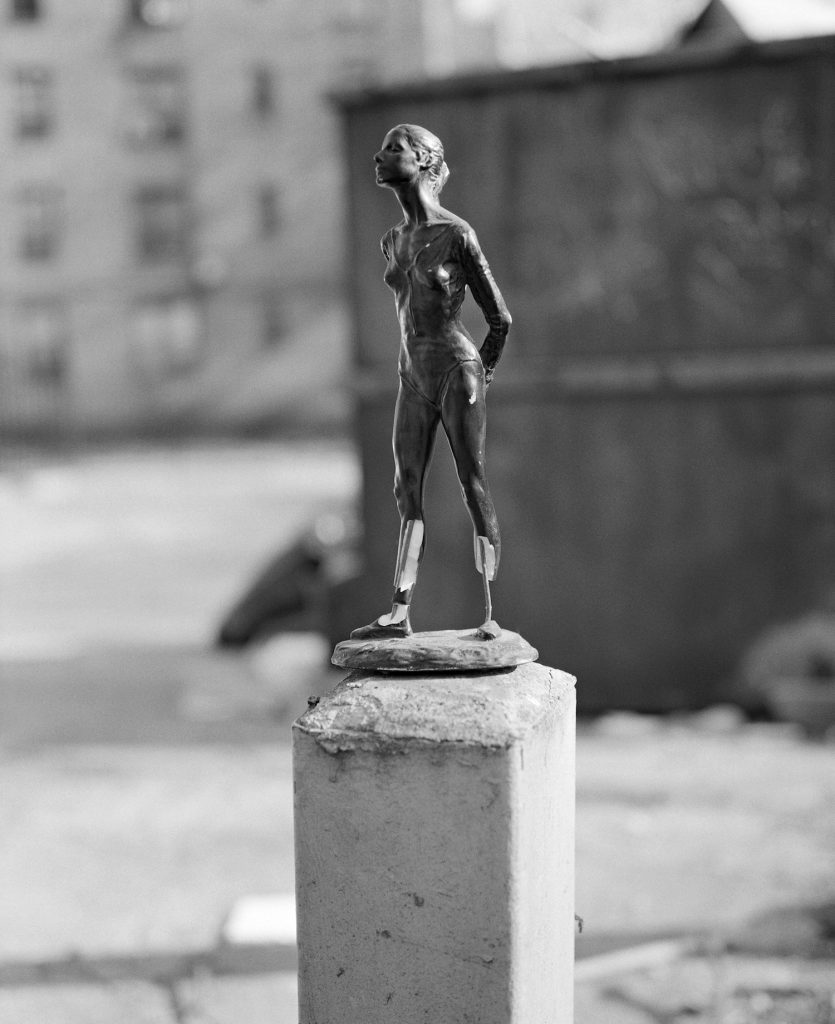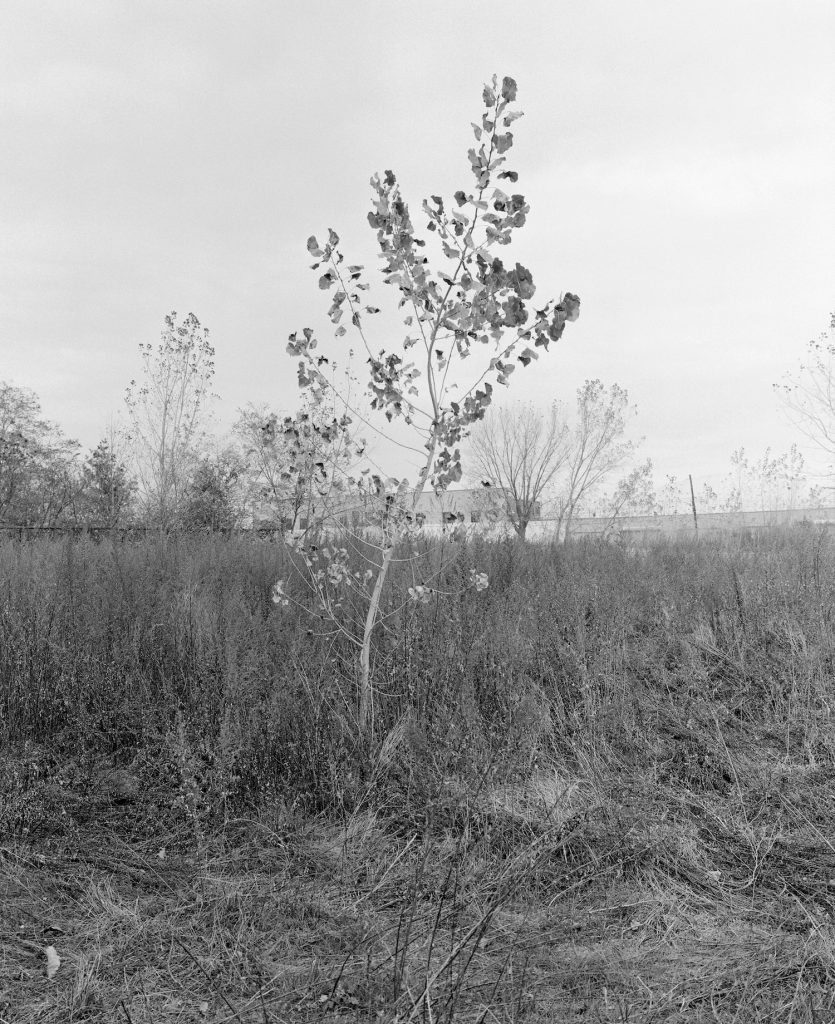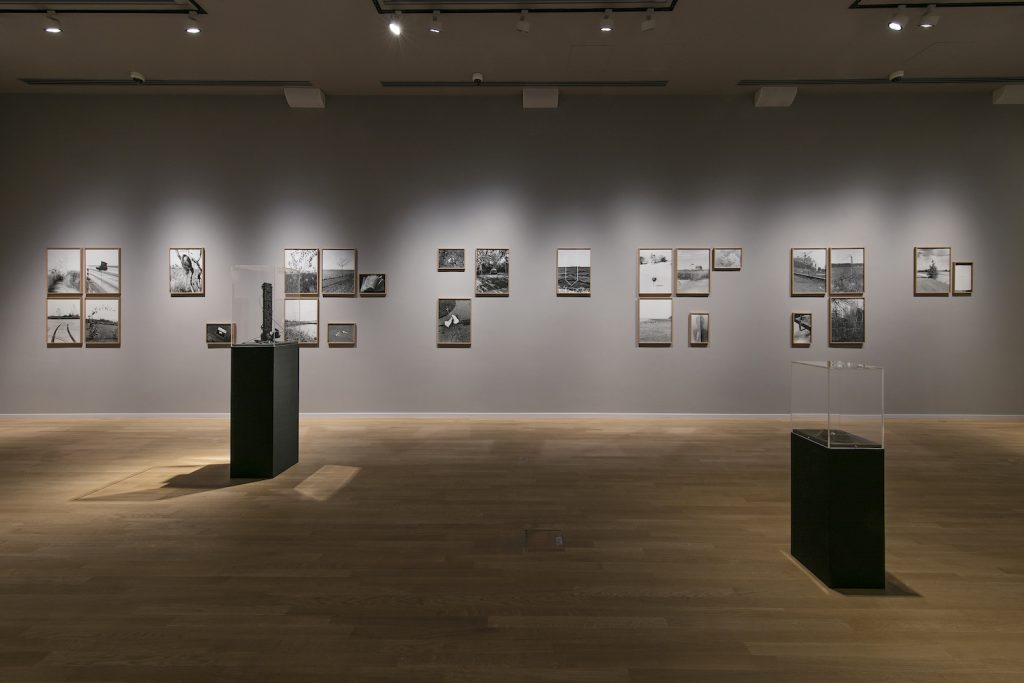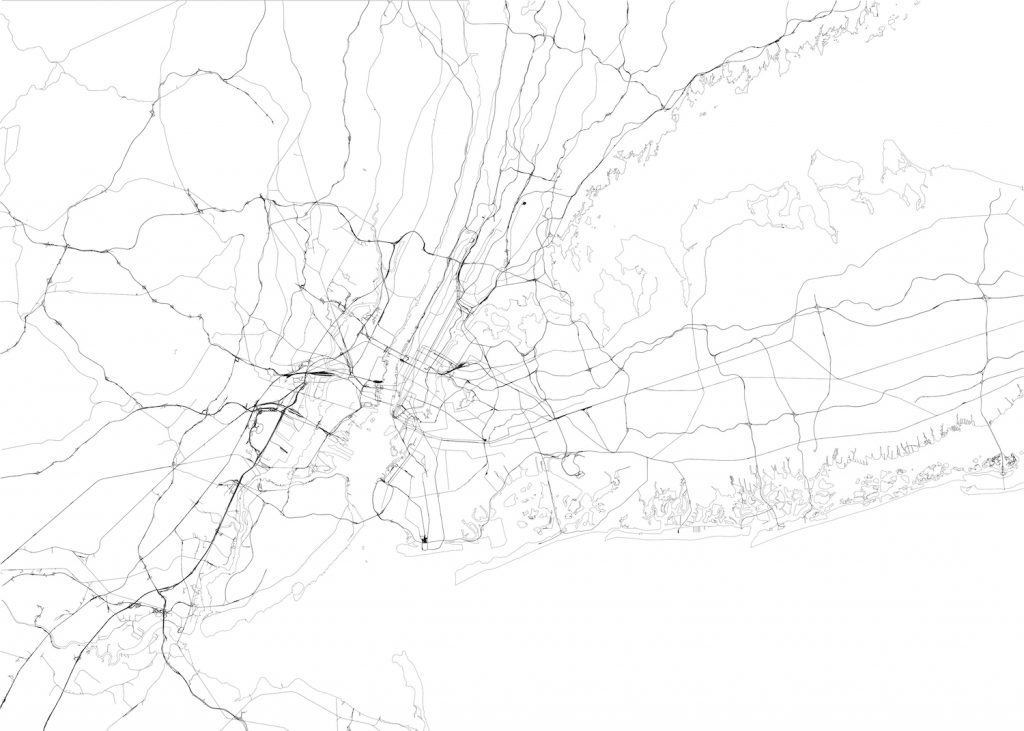di Beatrice Bruni
_
“…and that’s how you can tell just where the city ends: not where you can no longer hear the voice of a little girl giggling as she skips, or the screech of tires on asphalt, but where even the reverb of all the non-human devices disappears, those deployed to try to absorb or contain a very human solitude. Where you can hear the sweet holocaust of household appliances.”
Claudia Durastanti, So many voices make up the silence we hear now
The first time I was in New York it was evening, I was with some friends and we set out to find something for dinner. The street lights dazzled me, the heat enveloped me, the smells attacked me and the sounds seemed seductive and distant. I was in Manhattan, a place I had always pictured in my mind. I was at ease, I felt at home in that extraordinarily vast city. I fell in love with it. On a subsequent trip, a few years later, I visited New York again, and this time I was in Brooklyn. I could not imagine that the love for that city could become even more intense. But those peripheral places spoke to me even more deeply. I took long voracious walks and at every step I saw something that attracted me, that I wanted to get to know better, that I wanted to photograph, and take away with me.
New York is made up of five boroughs: Manhattan, Queens, Brooklyn, The Bronx, Staten Island. Everyone knows the iconic images of the city, the famous and central places, but few recognize the periphery, the perimeter.
Antonio Rovaldi, an international artist who lives and works between Milan and New York, accompanies us to discover an unprecedented vision of the external borders of the city.

The project resonates with a previous work by the artist, in which he had traveled, by bicycle, the entire perimeter of Italy, photographing the horizon. We have written about Orizzonte in Italia here magazine.photoluxfestival.it/en/antonio-rovaldi-orizzonte-in-italia/
Il lavoro di indagine intorno alla città di New York era al centro anche di una performance che Rovaldi realizzò nel 2009 con l’artista austriaco Michael Hoepfner, quando decisero di camminare lungo una porzione della Broadway per otto ore di fila, uno senza vedere e l’altro senza sentire. Raggiunto Inwood Park, Shorakkopoch per i nativi, stettero seduti su un tronco in ascolto del suono del becco di un picchio, la cui eco si espandeva nel parco e quindi, idealmente, nell’intera città (Shorakkopoch, 2009).
The investigation work around the city of New York was also at the centre of a performance that Rovaldi made in 2009 with the Austrian artist Michael Hoepfner, when they decided to walk along a portion of Broadway for eight hours straight, one without seeing and the other without hearing. When they reached Inwood Park, Shorakkopoch for the natives, they sat on a log listening to the sound of a woodpecker, whose echo spread throughout the park and therefore, ideally, throughout the city (Shorakkopoch, 2009).
From 2016 to 2018 Rovaldi walked alone, concentrically, along the borders of the five boroughs of New York and took more than 600 photographs, on film, in black and white and medium format, between concrete, green areas, water, the ocean, in search of the most hidden places, and ancestral signs that describe the authentic shape of the city.

Walking as an aesthetic practice: the artist gives an intimate and poetic description of a city that manifests its most secret nature, echoing ancient civilizations. Once the Native Americans lived there, and some toponymy still reminds us of this.
Rovaldi’s photographs tell of trees and open spaces, of objects abandoned on the ground, of immense uncultivated lawns, of concrete showing the signs of time, of fragments of torn paper, tar, brick walls, metal nets, and again signs, signs everywhere. Immensity and emptiness, change and static at the same time. You can hear the silence, the distant sound of the city, and even that of the Canadian geese, which lay their eggs here. Gentle sounds that arouse wonder and gratitude.

The results of this long walk were a powerful publication, The Sound of The Woodpecker Bill: New York City, published by Humboldt Books, 2019, and two exhibitions: the first at Harvard’s GSD department, landscape architecture, entitled End. Words From The margins. New York City, in November 2019, and The Sound of The Woodpecker, in February 2020, at GAMeC, Galleria d’Arte Moderna e Contemporanea, Bergamo.
The project was promoted by GAMeC in partnership with the Harvard GSD department and funded thanks to the Italian Council Award for Italian Art (2019).

An intense and very rich book, divided into five chapters, one for each of the five districts, which, right from the cover, creates an almost hypnotic interest: acid green concentric circles, like ripples in the water. The reference is to an old photograph by Gino De Dominicis,“Tentativo di far formare dei quadrati invece che dei cerchi attorno ad un sasso che cade nell’acqua” (Attempting to form squares instead of circles around a stone that falls into the water).
A very detailed book, where the places visited are recorded with precision, where you can find the notebooks, the maps of the city marked by writing and use, the list of film rolls used, with their reference number, and dates, with the places and subjects portrayed.
Per la realizzazione del libro, l’artista si è avvalso della collaborazione di alcuni autori che hanno contribuito con testi biografici.
La scrittrice Claudia Durastanti arricchisce il libro con un testo intenso dal titolo So many voices make up the silence we hear now.
Molto interessante anche Beginning at The End, il contributo di Steven N. Handel, professore universitario di botanica ed esperto di ecologia conservativa: a partire dalla sua infanzia all’estrema periferia della città, quando osservava i semi dell’acero cadere dalle piante in primavera, Handel racconta che oggi si occupa di progettare il recupero di aree urbane degradate e studia le cause dei cambiamenti climatici, gli effetti e le possibili soluzioni, tornando nei luoghi d’origine. Il megaprogetto di Freshkills Park, opera di riconversione di una delle più grandi discariche del mondo in area verde per New York, porta la sua firma.
For the realization of the book, the artist collaborated with some authors who contributed with biographical texts.
The writer Claudia Durastanti enriches the book with an intense essay entitled So many voices make up the silence we hear now.
Beginning at The End, the contribution of Steven N. Handel, university professor of botany and expert in conservation ecology, is also very interesting: starting from his childhood on the outskirts of the city, when he observed maple seeds falling from plants in spring, Handel says that today he is involved in planning the recovery of degraded urban areas and studies the causes of climate change, the effects and possible solutions. returning to the places of origin. The megaproject of Freshkills Park, the conversion of one of the largest landfills in the world into a green area for New York, bears his signature.
The collaboration of Francesca Benedetto, landscape architect and designer, is also very important. Hers are the sixty artistic maps, land, sky and sea maps, that we find in the book.

Le immagini di entrambe le mostre sopra citate sono in collezione permanente alla GAMeC e parte di queste sono adesso esposte nuovamente in occasione della mostra Collezione impermanente, inaugurata a marzo 2022, che presenta nuove acquisizioni in relazione alla storica collezione del museo.
The images of both the aforementioned exhibitions are now in the permanent collection at GAMeC and part of these are showed in the exhibition Collezione Impermanente, inaugurated in March 2022, which presents new acquisitions in relation to the historic collection of the museum.
For Rovaldi, the geography of places is an elastic image that can change according to our mood, as well as the human ability to connect distant stories, and project oneself into new possible worlds. Even walking on the outskirts of New York was a way to imagine these worlds, these new realities, in a connection between the past and the future, and between places, even if very far from each other.
I believe that next time I’ll be in New York I will have to visit the suburbs, with my eyes wide open, good shoes, in search of my past and my future, and listening to the sound of the woodpecker.




